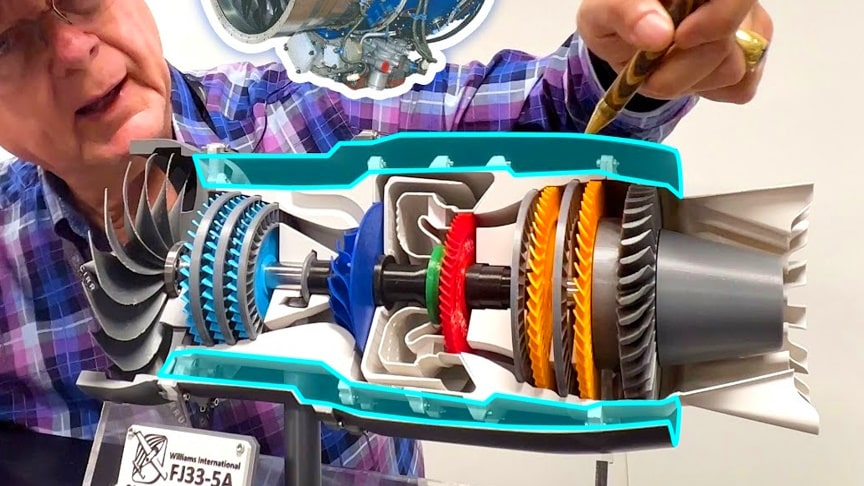A jet engine is a type of reaction engine, discharging a fast-moving jet of heated gas (usually air) that generates thrust by jet propulsion. While this broad definition may include rocket, water jet, and hybrid propulsion, the term jet engine typically refers to an internal combustion air-breathing jet engine such as a turbojet, turbofan, ramjet, or pulse jet.

Let’s look inside how a jet engine works using the Cirrus Vision Jet engine model!During my training for my Cirrus Jet SF50 type rating I found this excellent 3D printed model of a Williams International FJ33-5A jet engine. Watch the video from Personal Wings:
Air-breathing jet engines typically feature a rotating air compressor powered by a turbine, with the leftover power providing thrust through the propelling nozzle—this process is known as the Brayton thermodynamic cycle.
Advertisement
Jet aircraft use such engines for long-distance travel. Early jet aircraft used turbojet engines that were relatively inefficient for subsonic flight. Most modern subsonic jet aircraft use more complex high-bypass turbofan engines. They give higher speed and greater fuel efficiency than piston and propeller aeroengines over long distances.










